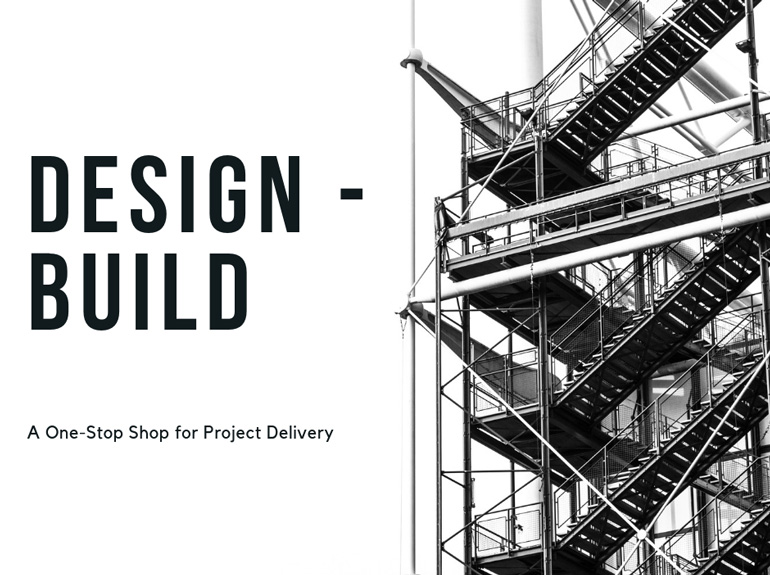Categories

Design-Build: a One-Stop Shop for Project Delivery
By Dennis Check, AIA
The Design-Build (DB) method is generally thought to be the simplest construction delivery method to execute and understand. This method is, ideally, a one-stop shop for the owner for the delivery of a “turnkey” building. In its simplest form, the owner hires a contractually combined architect/construction management/contractor team who agree to deliver the project for a stated price, with a single contract between the DB entity and the owner.
This seemingly simple two-party arrangement does include, however, some underlying complexity. One of the primary differences between this method and others is that the project’s design has to be reasonably well-formed before the DB team comes on board. This seems contradictory but is necessary if cost is going to be a determining factor in the selection of the DB team. Simply, the DB team must know what they are pricing to provide an accurate price.
For this reason, a true DB project needs to have more moving parts than the simple two-party arrangement described above, especially if the project is large and/or complex. DB has recently been accepted into the public bidding realm, and its structure includes two distinct phases, adding another contractual party, the criteria architect. Unless the project is very simple, or the project is already detailed to a sufficient degree, the following process should be followed in both public and private situations:
The owner hires a criteria architect to design the project in sufficient detail, allowing the parameters to be well known and described, to allow accurate pricing by the DB. This design will be schematic in nature but detailed enough to establish a contract basis. This is the Criteria phase.
This package is then provided to competing DB teams, who will review the package and provide a price accordingly. Their price will include all further detailed design and construction costs to provide the finished project. Of course, they will also include sufficient contingencies to allow for changes. Once the selection of the DB team is made and the owner contracts with them, the Design/Build phase begins. This phase entails further detailed design, then construction of the project.
The criteria architect remains on the project as an advisor to the owner, from DB team selection to the end of construction. The criteria architect cannot be part of the DB team; thus, his or her primary role is to ensure that the project is being (further) designed and constructed to the original parameters that were established.
For private projects or projects that are simpler in nature, the criteria architect may not be utilized. However, in order for you as the owner to realize the best benefit from this method, the project direction needs to be clear for the proposing DB team before contracts are signed.
Pros to Design-Build:
- Ideally, a simple contractual arrangement with a single entity that will design and build the project for the price stated
- A DB team that has prior working experience together (which should be one of the selection criteria), and a contractual relationship with each other
- Third party oversight and advocacy for the owner (with a criteria architect)
- Minimal involvement and administration by the owner is necessary
- Faster time frame for completion is possible, if made an early parameter
Cons to Design-Build:
- Possibility of wide variance between initial project envisioned and project delivered
- If no criteria architect is involved, little advocacy for the owner during the process
Consider this delivery system if:
- You have successfully used this method before, and have a trusted design/build team (especially if you are a private owner)
- There is no “wiggle room” in budget and/or schedule
- You want a simple contractual arrangement for the project, or you don’t have the experience or resources to devote to project administration
Design-Build Project Examples
Final Thoughts
The four construction delivery methods described in this and previous posts are the most common methods in use today. There are variations on the above themes that may be considered given your past experiences and project needs. There is not a one-size-fits-all approach that can easily or readily be applied to a certain kind of building or project. We suggest thoughtful discussion with your architect, who is usually the first of your contractual partners.
For an overview of other popular project delivery methods, click here. Follow us on Facebook, Twitter and Instagram to be the first to know when new posts are published!